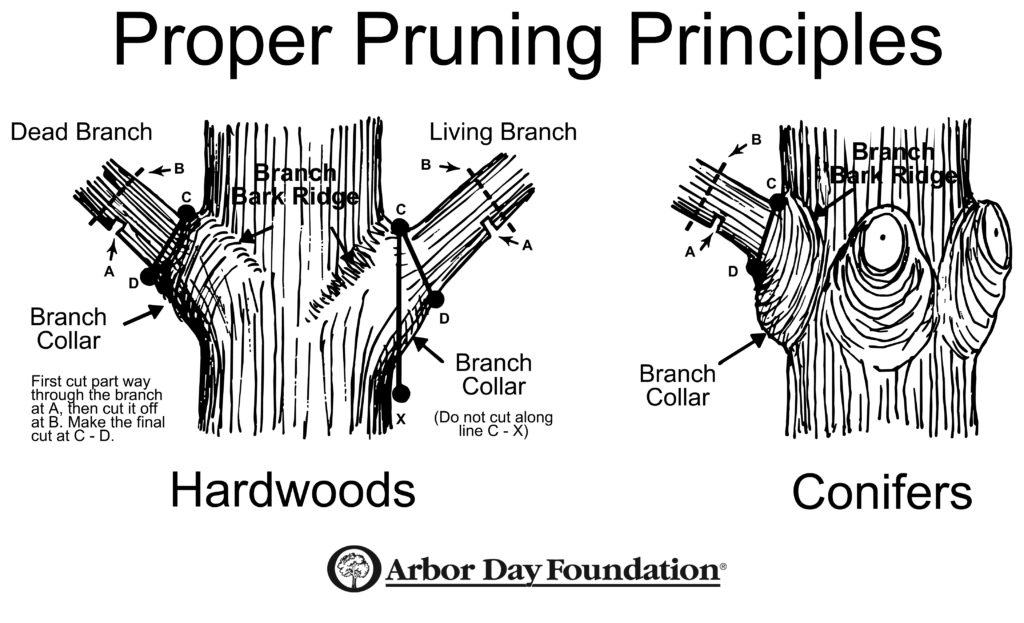The three step pruning method is used to perform pruning cuts on trees. It was pioneered by Dr. Alex Shigo, a renown plant pathologist considered to be the father of modern Arboriculture. Shigo worked for the United States Forest Service, specializing in the study of tree biology. He developed new concepts and ideas related to pruning and compartmentalization.
Shigo insisted that pruning cuts should focus on removing branch tissue, while avoiding damage to stem or bark tissue. He determined that if only branch tissues were cut during pruning, the stem tissues were not as likely to become decayed. The living cells surrounding the wound would quickly heal, with the injury eventually callusing over. Initially, Shigo’s findings were met with skepticism, but over time, they became widely accepted, resulting in numerous changes to commercial tree practices.
How to Apply the Three Step Pruning Method:
The purpose of the three step pruning method is to perform a series of cuts that creates or maintains a ring of callus, while avoiding damage to the branch collar or branch bark ridge. Before applying any cuts, locate the branch collar and branch bark ridge. The branch collar resembles a large bulge, and can be found growing from the stem tissue at the underside of the branch. The branch bark ridge is the ridged line of bark that runs along the crotch of the tree.
The first cut is made on the underside of the tree, just outside of the branch collar. Do not cut all the way through the branch. Instead, create a shallow notch. This prevents branches from tearing or ripping away from the stem as they fall.
The second cut should be made from the top of the branch, taking place one to two inches outside of the first cut. This cut can remove the entire branch, leaving a short stub. The second cut removes the weight of the branch, ensuring that the final cut can be performed safely.
The third cut removes the stub, and should be made just outside the upper branch bark ridge, angling downwards, away from the branch collar. Once all three cuts have been properly administered, a ring of callus forms and enlarges, enclosing the wound over time.
What to Avoid:
- All three cuts should avoid slicing into the branch bark ridge, or the branch collar. If either part is damaged, it can prevent the wound from sealing effectively, exposing the tree to disease and rot.
- Always remove stubs following the second cut. If a third cut is not applied, and the stub is allowed to remain, the branch tissue will likely decay, preventing or delaying closure of the wound.


